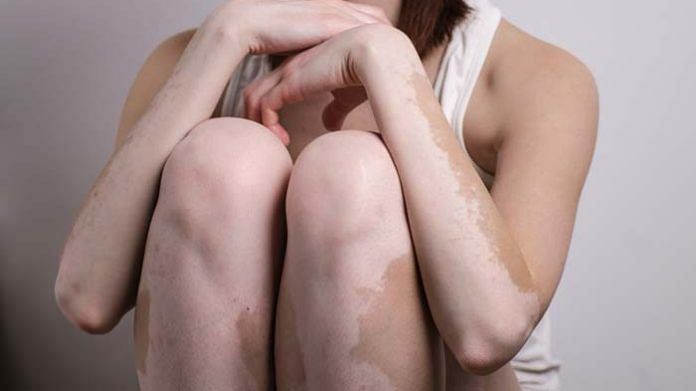If you’re someone with a chronic skin condition that needs long-term treatment, odds are that you’ve either heard of phototherapy or undergone it already.
So what is phototherapy, and why should you opt for it?
Phototherapy, also known as light therapy, is a treatment that involves exposing the skin to ultraviolet (UV) light under medical supervision. This artificial UV light helps shut down the immune system in the skin and therefore manage inflammatory skin conditions that arise due to an autoimmune response.
UV radiation differs on the basis of wavelengths. UVA has a medium to longer wavelength and can therefore reach deeper into the skin. UVB has a shorter wavelength, which is why it is used to treat conditions of the superficial layers of the skin. Blue light therapy, a form of phototherapy, is used to kill certain bacteria on the superficial layer of the skin, whereas red light therapy is used for scars, acne, and wrinkles.
Some conditions it treats
Phototherapy is commonly used to treat various skin conditions, including the following.
Psoriasis: Phototherapy is an effective procedure for managing psoriasis, a chronic autoimmune condition characterised by red, scaly patches on the skin. UVB phototherapy, in particular, is commonly used for this treatment.
Eczema (atopic dermatitis): Light therapy can help alleviate the symptoms of eczema by reducing inflammation and itching. Both UVA and UVB phototherapy may be used, depending on the severity of the condition.
Vitiligo: This skin disorder results in the loss of pigmentation, leading to white patches on the skin. Phototherapy, particularly narrowband UVB, can stimulate repigmentation in affected areas.
Acne: Phototherapy, especially blue light therapy, is used to treat acne by targeting the bacteria responsible for breakouts (propionibacterium acnes). It can also reduce inflammation and oil production in the skin.
Pruritus (itchy skin): Phototherapy can provide relief from itching associated with various skin conditions such as eczema, psoriasis, and urticaria.
Jaundice in newborns: Neonatal jaundice results from elevated total serum bilirubin. It presents as a yellowish discolouration of the skin, iris, and mucous membrane. The intensive phototherapy lights are normally in the blue-green spectrum (wavelengths 430-490nm). This is not ultraviolet light.
What happens during the process
Hand-held phototherapy (narrow band UVB) is a great idea and ideal for those with small area lesions. UV exposure can be taken at any time but with similar precautions. However, it is best not to take it on the face without strict medical supervision and not to stare at the light.
Phototherapy sessions are typically conducted in a dermatologist’s office or specialised clinic. The duration and frequency of treatment depend on the specific condition being treated and the individual’s response to therapy. It’s essential to undergo phototherapy under the supervision of a healthcare professional to minimise the risk of adverse effects such as sunburn and skin damage.
The initial treatment time is quite short. While the length of the session depends on the condition and the type of treatment, it can take anywhere between a few seconds to a few minutes for the procedure to end. In the later stage of treatment, UVB treatments take a few minutes and UVA procedures can take up to an hour.
Normally, treatments are done every week, and depending on the type of treatment, it can take up to a few months. For instance, broadband UVB treatment will show results after 3-5 treatments each week. You can discontinue the treatment when your skin gets clearer or there is significant improvement. While there may be a couple of sessions may be left for maintenance, the majority of the work is complete by this stage.
Those who have undergone phototherapy describe it as a warm sensation over their body. When the treatment is combined with a medication called psoralen, the patient’s body becomes more sensitive to light. This is known as PUVA.
Preparing for phototherapy
Once you reach the hospital or treatment centre, your medical team will give you protective eyewear for the procedure. Depending on the areas of treatment, you may get a blanket or a face shield to protect the parts of the body that aren’t getting treatment. Additionally, you will be given sunscreen before the treatment and instructions on how and where to apply it.
After the procedure is over, your doctor will advise you to use sunscreen on the treated area for protection against the sun; if you have dry skin, moisturising becomes essential too. Wear protective eyewear and appropriate clothing to avoid too much sunlight.
When you shouldn’t opt for it
As with any treatment, phototherapy must be avoided in certain situations such as pregnancy, liver dysfunction, previous history of melanoma (skin cancer), lupus, and allergy to sunlight, to name a few. Discuss your medical history in detail with your doctor before opting for this treatment line.
Phototherapy is the next frontier in treating long-term health conditions that arise due to an overactive immune response. It helps people regain their confidence and improves their quality of life. So, let there be light.
Dr Deepali Bhardwaj is a dermatologist, anti-allergy specialist, laser surgeon and internationally trained aesthetician. She tweets @dermatdoc. Views are personal.
(Edited by Humra Laeeq)



